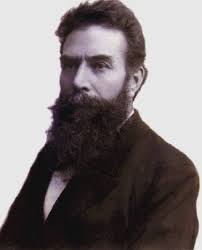When people go to a doctor for some pain or abnormality, the very first word the medical practitioner utters is ‘It is better to take an X-ray scan, because only then I can come to know the exact problem.” Well, have you ever wondered what X-rays are and who was the great mind behind this? Read further to have an elaborate view on the invention and inventors of the X-ray.
Before getting to know about the history of invention, let us know what exactly X-ray is.
X–RAY
X–Radiations are electromagnetic radiations with a wavelength of about 0.01 to 10 nanometers. The frequency corresponding to X-rays is about 30 petahertz to 30 exahertz. In comparison with the ultra violet and the gamma radiation, the wavelength of X-rays is shorter than the former and longer than the latter.
The inventors found that the X-ray was able to pass through materials with a particular density. In the medical stream, X-rays are being used for the diagnostic purposes where the electrons are made to fall onto a metal plate at a greater speed.
The Invention
The discoveries and inventions made until today are based on two aspects. The first one is made on a purpose, most often to fulfill a need. The second one is rather a quite interesting one, that is, accidental discoveries and inventions. Accidental discoveries have been probably path breaking inventions in the history of mankind.
The invention of X-ray is also one such accidental invention but a path breaking one. In the present scenario, can you imagine a bone abnormality being cured without proper diagnosis that is done with the help of these radiations?? No!! That is why the invention is path breaking. Until this invention was made, health care professionals treated all ailments related to the musculoskeletal system mostly on guesswork and intuition.
People Behind The Invention
German Physicist Wilhelm Conrad Roentgen
American physician William David Coolidge
The Accidental Invention of the X-Ray

In the year 1895, Wilhelm Conrad Roentgen was working with a cathode ray generator. He removed the entire air inside the fluorescent tube and then filled it with a unique gas. When the tube was exposed to a very high electric voltage, it emitted fluorescence. He covered the tube with a black paper and then noticed that a barium coated screen in his laboratory started to glow. He came to a conclusion that the tube was emitting an unknown invisible light or radiation. The rays reached the deeper layers that were ever expected. He never thought that it was possible for the radiations to reach such interior and deeper layers crossing the denser particles of the material. He was very much attracted and excited towards the new phenomena and decided to work on it. He made several developments to show his invention to the world.
While working on its improvement, Roentgen was amazed to notice that he was able to capture the photograph of his wife’s hand bones. He was surprised to a greater extent with this and decided to showcase his invention to the rest of the scientist community. The radiation was the one that helped to see the surface of the bones by penetrating through the skin.
When the invention was investigated deeply, it was found that the radiations were produced at the edge of the point of contact of the vacuum tube. These radiations did not show any deflections when interfered by a magnetic field. It was also noticed that these radiations were able to pass through any kind of material irrespective of the density of the particle.
This invention created a stir among the scientist community and also among the public. It was named as X-radiation mainly because the source of the radiation was unknown. It is sometimes known as Roentgen radiation as well. In a month of time, he submitted his invention to the Wurzburg physical- Medical society. His invention was obviously regarded as a medical miracle.
Though he did not make any patents for the invention of the X radiation, he was awarded with the Nobel Prize in 1901. In fact, he was the first physicist to receive the Nobel Prize.
However, there are cases wherein people died due to the high intensity of the X-rays when there wasn’t a clear idea on the properties of X-rays and how it can be used safely for diagnostic purposes. The most advanced techniques in medical diagnostics that are enjoyed by us today are a result of the hard work and sacrifice of many people.
Contributions of William David Coolidge

The advancements on X-rays did not luckily stop with Wilhelm Roentgen. William David Coolidge had also made notable discoveries and advancement with X radiations. As most of you are aware, the tube that Coolidge invented is known as the Coolidge tube. Though the principle of X-rays was invented by Roentgen, the application in medical diagnostics is based on Coolidge’s model. He also contributed towards many tungsten based inventions. Dropping a tungsten wire before the oxidation led to the discovery of the tungsten powder metallurgy. This tungsten powder metallurgy shared an important impact for the development of the lamp industry.
How X-rays work
X-rays are believed to produce images due to the different absorption rates of the different body tissues. The picture produced using an X-ray is known as a radiograph. The calcium found in bones are said to absorb maximum of the X-radiations. Hence, the bones appear white in the radiograph. Other body tissues like lipids, fats and skin are found to absorb very little of these radiations in comparison with the bones. Therefore, they appear in a mild grayish color. In the radiograph, the lung region looks darker. This is because air absorbs least amount of X-radiation.
The entire human race must be grateful for this excellent invention.

Comments are closed.